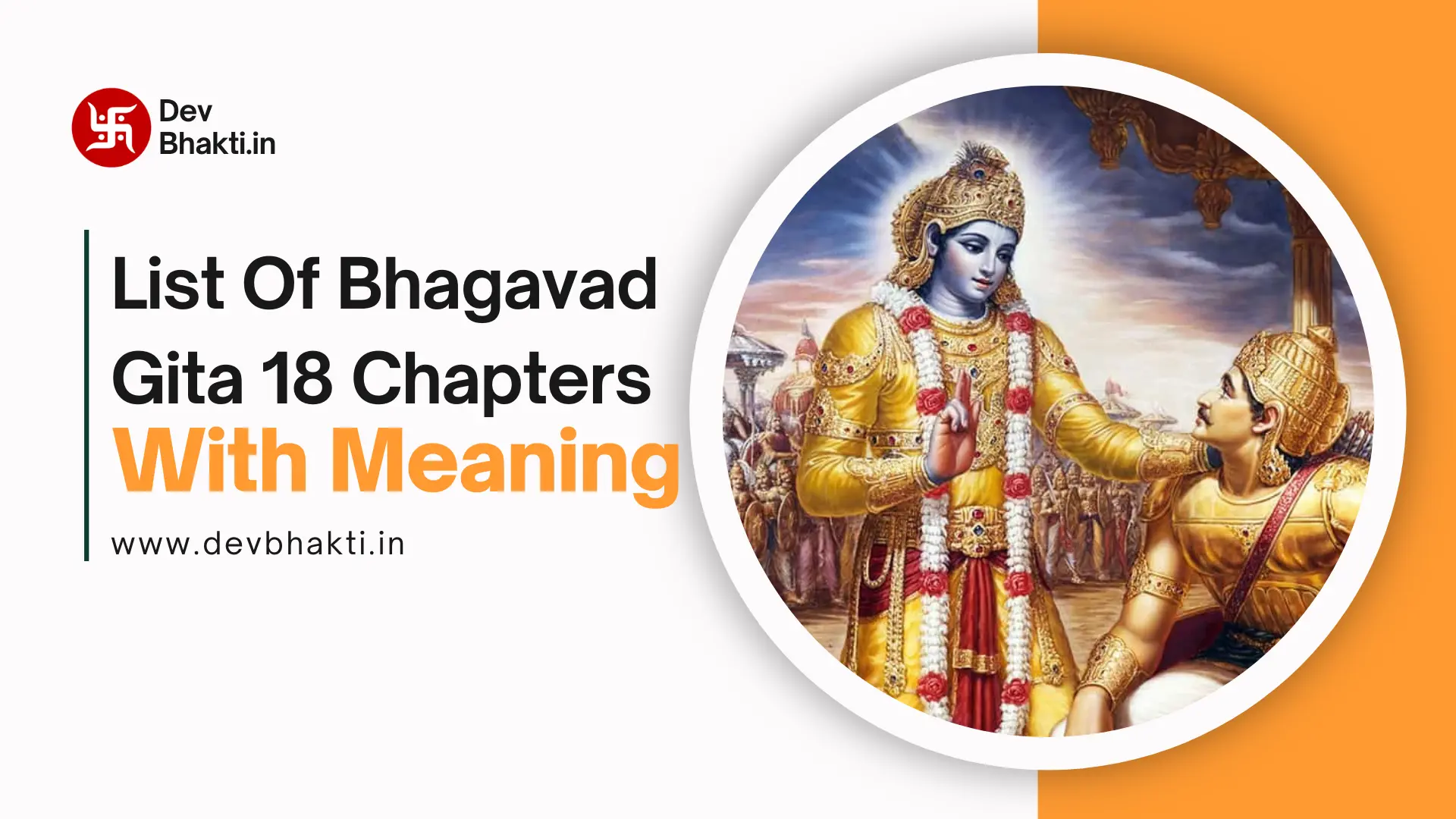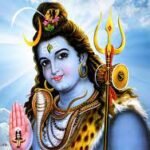The Bhagavad Gita – a guidebook to life
The Bhagavad Gita is one of India’s ancient texts and is derived from the epic poem, The Mahabharata. This still stands as the longest poem ever written, with over 100,000 shlokas or over 200,000 verses. Though only a part of The Mahabharata, the Bhagavad Gita is perhaps one of the most important and highly revered yogic texts ever to have been written.
Texts like The Upanishads and the Dhammapada are also part of this poem. But it’s the Bhagavad Gita that’s often cited as holding the key to personal transformation:
The Bhagavad Gita is a map and a guidebook. It gives us a systematic overview of the territory [of life], shows various approaches to the summit with their benefits and pitfalls, offers recommendations, tells us what to pack and what to leave behind. More than either of the others (the Upanishads and the Dhammapada), it gives the sense of a personal guide. It asks and answers the questions that you or I might ask. Questions not about philosophy or mysticism, but about how to live life effectively in a world of challenge and change.
Chapter 1: Arjuna Vishada Yoga – The Yoga of Arjuna’s Despondency
अध्याय 1: अर्जुन विषाद योग – अर्जुन के निराशा के योग
Chapter 2: Sankhya Yoga – The Yoga of Knowledge
अध्याय 2: सांख्य योग – ज्ञान का योग
Chapter 3: Karma Yoga – The Yoga of Action
अध्याय 3: कर्म योग – कर्म का योग
Chapter 4: Jnana Yoga – The Yoga of Knowledge and Wisdom
अध्याय 4: ज्ञान योग – ज्ञान और विवेक का योग
Chapter 5: Karma Sannyasa Yoga – The Yoga of Renunciation of Action
अध्याय 5: कर्म संन्यास योग – कर्म से संन्यास का योग
Chapter 6: Dhyana Yoga – The Yoga of Meditation
अध्याय 6: ध्यान योग – ध्यान का योग
Chapter 7: Jnana-Vijnana Yoga – The Yoga of Knowledge and Wisdom
अध्याय 7: ज्ञान-विज्ञान योग – ज्ञान और विज्ञान का योग
Chapter 8: Aksara-Parabrahman Yoga – The Yoga of the Imperishable Brahman
अध्याय 8: अक्षर-परब्रह्म योग – अखण्ड ब्रह्म का योग
Chapter 9: Raja-Vidya Raja-Guhya Yoga – The Yoga of the Royal Science and Royal Secret
अध्याय 9: राजविद्या राजगुह्य योग – राजविद्या और राजगुह्य का योग
Chapter 10: Vibhuti-Vistara Yoga – The Yoga of Divine Manifestations
अध्याय 10: विभूति-विस्तार योग – विभूति का विस्तार का योग
Chapter 11: Visvarupa-Darsana Yoga – The Yoga of the Vision of the Universal Form
अध्याय 11: विश्वरूपदर्शन योग – विश्वरूप के दर्शन का योग
Chapter 12: Bhakti Yoga – The Yoga of Devotion
अध्याय 12: भक्ति योग – भक्ति का योग
Chapter 13: Ksetra-Ksetrajna Vibhaga Yoga – The Yoga of Discriminating the Field and the Knower of the Field
अध्याय 13: क्षेत्र-क्षेत्रज्ञ विभाग योग – क्षेत्र और क्षेत्रज्ञ के भेद का योग
Chapter 14: Gunatraya-Vibhaga Yoga – The Yoga of the Three Modes of Material Nature
अध्याय 14: गुणत्रय विभाग योग – तीन गुणों के भेद का योग
Chapter 15: Purushottama Yoga – The Yoga of the Supreme Person
अध्याय 15: पुरुषोत्तम योग – परम पुरुष का योग
Chapter 16: Daivasura-Sampad-Vibhaga Yoga – The Yoga of Discriminating between the Divine and Demoniac Natures
अध्याय 16: दैवासुर संपद्विभाग योग – दैवी और अदैवी संपत्ति का विभाग का योग
Chapter 17: Sraddhatraya-Vibhaga Yoga – The Yoga of Discriminating the Threefold Division of Faith
अध्याय 17: श्रद्धात्रय विभाग योग – तीन प्रकार की श्रद्धा के विभाग का योग
Chapter 18: Moksha-Opadesa Yoga – The Yoga of Liberation by Renunciation
अध्याय 18: मोक्षोपदेश योग – मोक्ष के उपदेश का योग
Sri Bhagwad Gita Chapters 1 to 18 In English
In everyone’s life also, the 18 chapters of the Bhagavad Gita happen.
· Chapter 1: Visada Yoga
The first chapter is where you regret and say, “I am powerless and I give up”.
· Chapter 2: Sankhya Yoga
The second chapter in your life is when someone wakes you up and says, “Hey come on! There’s nothing to regret in life. There is something in you that doesn’t change and you have the power to sail over all this”. Then you wake up and you felt good.
· Chapter 3: Karma Yoga
The third chapter tells you to act. Don’t sit and worry, ‘What about me? What about me? ?’ Go and act, this isKarma Yoga.
· Chapter 4: Jnana Yoga
The fourth chapter tells you, now that you are acting you must also listen to knowledge. Don’t become like a machine and only act, listen to knowledge as well . There is something beyond all this.
· Chapter 5: Karma Vairagya Yoga
The fifth chapter tells you about material and spiritual knowledge. You cannot say, “Everything is being done and there is nothing for me to do”, or you cannot think, “I am doing everything. I did this and I did that”. This is not going to work for you. Wake up and see, are things happening or are you really doing it?
· Chapter 6: Abhyasa Yoga
Then the sixth chapter is when you learn to meditate.
· Chapter 7: Paramahamsa Vijnana Yoga
The seventh chapter tells you, now that you’re meditating, you should know the author of meditation and the one who is meditating in you. ‘Who am I? What is time?’ Knowing all about science.
· Chapter 10: Vibhuti-Vistara-Yoga
Like that it goes on! When you meditate miracles happen in your life. Wake up and see the miracles! Many don’t observe miracles, nor believe in it. If you recognize it and believe in it then it happens even more! Give a chance for miracles to happen, don’t be so steeped in the material cause and effect — ‘I did this so this will happen’, or ‘I did that and only that will happen’, no! You did it but something else can also happen out of the blue! Recognizing that ‘something different’ is Vibhuti. Vibhuti means giving a chance for miracles in your life, exploring it.
· Chapter 11: Visvarupa-Darsana Yoga
Then after that is knowing the universal self and knowing that everything is in me and I am in everything.
· Chapter 12: Bhakti Yoga
Then comes love and devotion. You know and understand all this, but then what? It is not enough. You should be in deep love! When you know that the divine loves you, you cannot but fall in love with divine!That’s the 12th chapter.
· Chapter 13: Ksetra-Ksetrajna Vibhaga Yoga
Then you understand what are the divine qualities and what are the demonic qualities and you realize that you have all the divine qualities in you.
· Chapter 14: Gunatraya-Vibhaga Yoga
Then there are the three qualities or Gunas (Sattvic, Rajasic and Tamasic) to everything: mind, ego and food. Sattavic ego is, “I am everything and everybody”. The Tamasic ego is knowing that you are only this body, and the Rajasic ego is having a limited mindset and falling into craving and aversion.
· Chapter 18: Moksa-Opadesa Yoga
The final chapter is knowing that you cannot wash your own sins. Drop them and understand what is being said, “I am here to take care of your sins. Feel that you are mine, be connected to me and I will take care of everything. Just relax!’
This is sanyaasa or liberation.
Summarizing Sri Bhagwad Gita Chapters 1 to 18
The Bhagavad Gita often referred to as the Gita, is a 701-verse Hindu scripture that is part of the epic Mahabharata, dated to the second century BCE. It is considered to be one of the main holy scriptures for Hinduism. The Bhagwad Gita consists of 18 chapters. Each chapter is called a yoga. Yoga is the existence of the individual consciousness attaining communion with the Ultimate Consciousness. Each chapter is a highly specialized yoga revealing the path of attaining realization of the Ultimate Truth. Gita is also a ‘song’ that raises the hope and possibility for human individual and collective well-being. So in everyone’s life also, the 18 chapters of the Bhagavad Gita happen.
A deluded mind cannot get clarity on its own, it can happen only through grace. When life seems like a battle, Bhagavad Gita can help the seeker come out of misery and find equanimity. It helps you attain many skills which will enhance your actions because it is the actions that bring happiness or sorrow. When you are skillful in your action, then it will bring you happiness, or less misery. In a world full of cravings and aversions, it is easy to find the attachment in material and lose track of our lives.
Although Bhagwad Gita is a subject which a person may not be able to understand completely in his entire life span, I will try to overview in short, Bhagwad Gita chapter by chapter, for the benefit of my readers:
Chapter 1
Lamenting the Consequence of War: After naming major warriors on both sides, and on seeing his intimate relatives, teachers, and friends, Arjun feels dejected due to the fear of losing many of them in the consequence of the impending war and the subsequent sins attained by such actions. Overcome by grief and pity, Arjuna fails in strength, his mind becomes bewildered and he gives up his determination to fight.
Chapter 2
The Eternal Reality of the Soul’s Immortality: Often deemed to be the summary of the entire Bhagwad Gita, this second chapter in your life predominantly deals with the immortal nature of the soul existing in all living entities and it has been described in great detail. Arjuna submits to Lord Krishna as His disciple, and Krishna begins His teachings to Arjuna by explaining the fundamental distinction between the temporary material body and the eternal spiritual soul. Lord Krishna explains the nature of selfless service to the Supreme and the characteristics of a self-realized person.
Chapter 3:
Karma, The Eternal Duties of Human Beings: The third chapter ‘tells you to act’. Lord Krishna says that the performance of prescribed duties is obligatory for everyone. Here each and every member of the society has to carry out their functions and responsibilities in their respective stage of life according to the rules of the society in which he lives. Further, He explains in detail as to why such duties must be performed, what benefit is gained by performing them, what harm is caused by not performing them. Go and act, this is Karma.
Chapter 4:
Approaching the Ultimate Truth: The fourth chapter tells you, now that you are acting you must also listen to knowledge. Lord Krishna explains how spiritual knowledge is received by disciples and the necessity of approaching a ‘guru’ a realized teacher. He also explains the paths of actions and knowledge as well as wisdom regarding the supreme knowledge which results in the culmination of the two paths. Every act can be an act of Prayer.
Chapter 5:
Action & Renunciation: The fifth chapter tells you about material and spiritual knowledge. Lord Krishna deals with detachment and renunciation explaining that both are means to the same goal. He explains how salvation is attained by the pursuance of these paths. You cannot say, “Everything is being done and there is nothing for me to do”, or you cannot think, “I am doing everything. I did this and I did that”.
This is not going to work for you. Wake up and see, are things happening or are you really doing it? Renounce the ego of individuality and rejoice in the bliss of infinity. Outwardly performing all actions but inwardly renouncing their fruits, the wise man, purified by the fire of transcendental knowledge, attains peace, detachment, forbearance, spiritual vision, and bliss.
Chapter 6:
Connect to the Higher Consciousness: The sixth chapter is when you learn to meditate and connect to the Higher consciousness. Lord Krishna reveals ‘astanga’ yoga and the process of practicing such yoga. Astanga Yoga controls the mind and the senses and focuses on Parmatma ( the Supersoul). He explains in detail the difficulties of the mind and the procedures by which one may gain mastery of their mind through yoga which reveals the spiritual nature of a living entity.
Chapter 7:
Knowledge of the Ultimate Truth. In the seventh chapter Lord Krishna gives concrete knowledge of the absolute reality as well as the opulence of divinity. He also declares how extremely difficult it is to surmount Maya. He says “I am the Supreme Truth, the supreme cause and sustaining force of everything, both material and spiritual”. Advanced souls surrender unto Him in devotion, whereas impious souls divert their minds to other objects of worship.
Chapter 8 :
Attainment of Salvation: In the eighth chapter Lord Krishna emphasizes the science of yoga. He also gives information on the creation of the material world as well as establishing a distinction between them and the spiritual world. Here He reveals that one attains whatever one remembers at the end of one’s life. Krishna emphasizes the utmost importance of the very last thought at the moment of death. It means that by remembering Lord Krishna in devotion throughout one’s life, and especially at the time of death, one can attain to His supreme abode, beyond the material world.
Chapter 9 :
The Most Confidential Knowledge: In chapter nine Lord Krishna explains how the entire material existence is created, pervaded, maintained, and annihilated by His external energy and all beings are coming and going under His supervision. He is the Supreme Godhead and the supreme object of worship. The soul is eternally related to Him. Then after that is knowing the universal self and knowing that ‘everything is in me and I am in everything’.
Chapter 10:
The Infinite Glory of the Ultimate Truth: Chapter ten reveals Lord Krishna’s exalted position as the cause of all causes and the support and essence of everything. Also specifying His special manifestations and opulence, Krishna is the supreme object of worship. When you meditate miracles happen in your life. Wake up and see the miracles! This is Vibhuti. Vibhuti means giving a chance for miracles in your life, exploring it. Then you understand what are the divine qualities and what are the demonic qualities and you realize that you have all the divine qualities in you.
Chapter 11:
The Vision of the Universal Form: In chapter eleven Lord Krishna grants Arjuna divine vision and reveals His spectacular unlimited universal form showing all of existence. Thus He conclusively establishes His divinity. Have enough surrender to see the Truth as it is. Then after that is knowing the universal self and knowing that everything is in me and I am in everything.
Chapter 12:
The Path of Devotion or Absorb your mind in the Higher. In chapter twelve Lord Krishna extols the glory of devotion to God. Along with this He explains the different forms of spiritual disciplines and discusses the qualities of the devotees who by performing their activities in this way become very dear to Him. Then comes love and devotion. You know and understand all this, but then what? It is not enough. You should be in deep love! When you know that the divine loves you, you cannot but fall in love with the divine! This chapter deliberates between bhakti yoga, and the pure devotional love for Krishna, which is the highest end of spiritual existence.
Chapter 13:
The Individual and Ultimate Consciousness or Detach from Maya and attach to Divine. In chapter thirteen Lord Krishna reveals the distinct difference between the physical body and the immortal soul. He explains that the physical is transitory and perishable whereas the soul is immutable and eternal.
Then you understand what are the divine qualities and what are the demonic qualities and you realize that you have all the divine qualities in you.
Chapter 14:
The Three Qualities of Material Nature: In chapter fourteen Lord Krishna reveals that all embodied souls are under the control of three modes, or qualities, of material nature: goodness, passion, and ignorance, which influence everything in the material existence. Here He clearly advises to relinquish oneself from ignorance and passion and adopt the path of pure goodness until acquiring the ability to transcend them.
Chapter 15:
Realization of the Ultimate Truth or Give priority to divinity. In chapter 15 Lord Krishna reveals the virtues, the glories, and the transcendental characteristics of God being omnipotent. Also, He explains the purpose and value of knowing about God and the means by which He can be realized. One who understands Krishna’s supreme identity surrenders to Him and engages in His devotional service. People who have self-discipline and follow the path of yoga recognize God in themselves as their Self.
Chapter 16:
The Divine and the Demoniac Natures. In chapter sixteen Lord Krishna describes explicitly, explaining separately and in detail the divine properties, conduct, and actions that are righteous in nature and conducive to divinity. Krishna says that those who possess demoniac qualities and who live whimsically, without following regulations of scripture, attain lower births and further material bondage. But those with divine qualities and regulated lives and abide by the spiritual authority, gradually gain spiritual perfection.
Chapter 17:
The Three Divisions of Material Existence. In chapter seventeen Lord Krishna clarifies the three divisions of faith, revealing that it is these different qualities of faith in the Supreme that determine the character of living entities. He warns Arjuna against doing things counter to the teachings of the scriptures. Studying scripture still holds a place of utmost importance. Krishna tells Arjuna that by the devoted and heart-centered study of the scriptures, a person “has worshipped / and loved me with the yoga of knowledge.”
Acts performed by those whose faith is in passion and ignorance yield only impermanent, material results; whereas acts performed, in goodness, in accord with scriptural injunctions, purify the heart and lead to pure faith in Lord Krishna and devotion to Him.
Chapter 18:
The Final Revelations of the Ultimate Truth, Renounce and Relinquish. In chapter eighteen Lord Krishna sums up the ultimate conclusion of Gita and describes the meaning of renunciation and attainment of salvation by the paths of karma. The Lord explains that while doing so, one must offer without reservation everything to God. What Krishna means by renouncing is that actions should not be driven by desire. Relinquishing, on the other hand, means not having attachment to the results of actions.
He tells Arjuna that even acts done with good intentions, such as worshipping, should be done without attachment to outcomes. Lord Krishna says that the unconditional loving surrender to Him frees one from all sins, and enables one to return to Krishna’s eternal spiritual abode.
Let go, let’s move to union with God. The final chapter is knowing that you cannot wash your own sins. Drop them and understand what is being said, “I am here to take care of your sins. Feel that you are mine, be connected to me and I will take care of everything. Just relax !’.
Krishna addresses aspects of human nature and the wonders of the universe in the Bhagavad Gita. One of his core teachings is the idea of doing “right action,” or karma yoga, as worship to God, while the devotee remains unattached to results.
Anyone who studies the Gita with discipline and good intent is on the pathway to reaching God. Krishna tells Arjuna that by the devoted and heart-centered study of the scriptures, a person “has worshipped / and loved me with the yoga of knowledge.”
‘The Bhagvad Gita is for anyone who wants to succeed, approach any given situation with level-headedness and skill, and find the sparkle within oneself’. Sri Sri Ravi Shankar.
These are the 18 chapters and these chapters are all a part of everybody’s life. Sometimes we don’t reach up to the 18th chapter. It takes many lifetimes to reach there! Even I cannot say with authority that I have understood ‘Gita’.
This blog has taken me weeks together to summarize the vast subject that ‘Bhagwad Gita’ is and I still feel it is too little.
Inputs and pics courtesy Google, Krishna.com, bhagvad gita.com,Wikipedia,Reddit
What is the main concept of the Bhagavad Gita?
In the Bhagavadgita, Krishna teaches that one can kill only the body; the soul is immortal. At death, the soul is reborn in another body, or, for those who have fully grasped the true teachings, it achieves release (moksha) or extinction (nirvana)—that is, freedom from the wheel of rebirth.
Who wrote the Bhagavad Gita and how?
The Srimad Bhagwat Geeta was written by Maharishi Vedvyas Ji. In the Mahabharata, Veda Vyasa wrote the Bhagavad Gita. This is about what Sanjay overheard Arjun and Krishna saying to each other. Veda Vyasa composed the Bhagavad Gita, which is included in the Mahabharata.
What is the main message of the Bhagavad Gita?
The main teachings of the Bhagavad Gita: Karma Yoga: A right path of action and selfless service leading to getting on with spirituality. Jnana Yoga: The path of knowledge and thought as a way to discover the actual nature of yourself and the universe.
Why is the Bhagavad Gita so famous?
The Bhagavad Gita – a guidebook to life
This still stands as the longest poem ever written, with over 100,000 shlokas or over 200,000 verses. Though only a part of The Mahabharata, the Bhagavad Gita is perhaps one of the most important and highly revered yogic texts ever to have been written.









